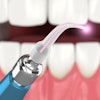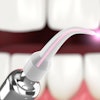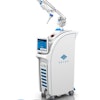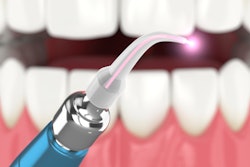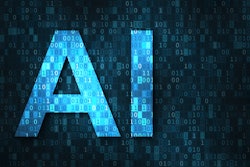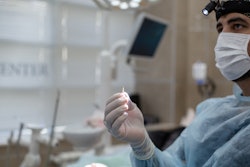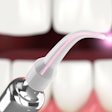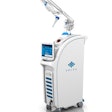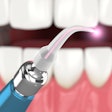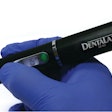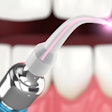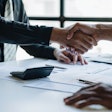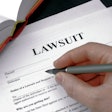Technology in the dental industry will continue to evolve in 2024, and more dentists are expected to increase the amount of technology in their practices as the year goes along. With that in mind, I recently talked with Dr. Russell Morrow, who practices in the Phoenix area and who has served as the regional doctor mentor of operations for Heartland Dental and currently works as the chief dental officer for Biolase. I wanted to get Dr. Morrow's insights into the laser market and how it has benefited him and his patients.
Why would you advise a dentist to investigate purchasing a laser in 2024?
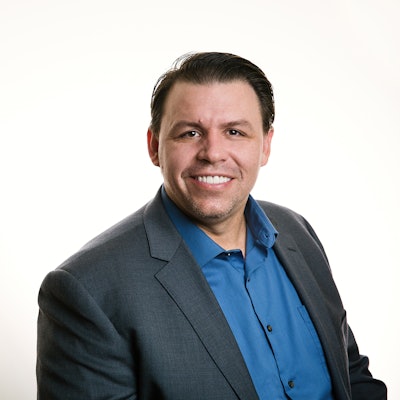 Dr. Russell Morrow.
Dr. Russell Morrow.
Do the research. Ask questions. Find a trial or education program. I’ve been using diode lasers my whole career. I haven’t packed a cord since dental school, and my hygienists use diode lasers all the time for cleanings. When considering expanding on innovative technology, I checked out the Waterlase iPlus all-tissue laser to see the return on investment (ROI) behind it, and, importantly, if it was easy to use.
Over the first four or five months of using it, I realized the ROI was huge. I was keeping more treatments in-house that I was previously referring out, for example, procedures like frenectomies, crown lengthenings, and periodontal repair surgeries. With the Waterlase iPlus, I was able to handle the most advanced periodontal issues that weren’t getting better from scaling and root planing alone.
After that first year, I evaluated my revenue change one year over the next and we increased ROI by 28% in 2019. Then, the second year was another 34% in 2020!
Now, of course, there are a lot of different things that can happen in one year, but adding advanced laser technology to my practice has made the biggest change. From treating patients better to keeping more procedures in-house, every dentist should look at incorporating a laser into their practice and staying up to date on the latest applications.
What kind of buy-in did you need from your team? How did they embrace using lasers, and how do they communicate to patients about this technology?
Without a team who is involved, it doesn’t work. I realized quickly that I couldn’t have multiple team members in charge of the laser, because if it wasn’t ready, I didn’t know who should have turned it on. Now, I have one person responsible for turning on the laser to ensure it’s ready.
She knows the ins and outs of what needs to happen with the laser and handles the maintenance as well. When I get to the office, her job is to ensure all the lasers are turned on, because if I have to wait for them to get turned on and boot up, unfortunately, I will probably reach for a scalpel. I am an impatient dentist. I have a busy practice, so if I have to wait, I’ll find another way to ensure my patients spend the least amount of time in the chair as possible.
The other huge component entails my hygienists and the key role they play. I like to call it my “anticipated treatment plan.” They need to be able to see in their hygiene room what I’m also looking for so they can preheat the laser and inform the patient of the next steps. “Hey, Dr. Morrow is probably going to talk about X, Y, and Z,” or “In the past, I’ve noticed Dr. Morrow does one, two, and three in this scenario.” When I go in and reiterate that anticipated treatment plan, it builds value and reassurance for that patient, who is hearing the same thing multiple times.
What do you think is the biggest myth about lasers that needs to be busted?
The biggest myth is that they are slow. Everyone who I start talking about dental lasers with will say, “Well, I'm moving too fast.” You're right in the fact that scalpels are faster than lasers when cutting, but the downfall with scalpels is that you get inflammation, bleeding, delayed healing, swelling, and more.
Plus, often, I can use the laser with less anesthesia and better healing rates. The actual slicing of the scalpel is phenomenal. It’s easy and it’s quick, but when it comes to all the byproducts of using it, that’s where a laser reigns supreme. Plus, my patients love the laser procedures. Using a laser allows me to take impressions that day and therefore saves the chair time of a return visit. Doctors are worried about saving a few minutes, where using lasers can save hours of time in follow-up appointments.
What was one of the biggest things that surprised you or that you didn’t expect when you first started to use a laser?
The biggest thing is that I’ve been able to save teeth that I couldn’t save before. A great example is when you have a patient with a tooth that has a big bulk fracture on it. The initial thought always is, “OK, we're going to take that out, or it’s going to take a lot more effort to save.” Now, by adding the crown lengthening for a young person with great bone around that tooth, you have a break that invades the biologic, but with the laser, we’re able to change the biologic to be able to save that tooth.
I like to use the analogy that when you buy a nice painting, you’re not going to go to Michael’s to buy the frame for it. You’re going to go and make sure you have a nice custom frame that’s built around it. It’s the same thing with veneers. The frame is the gums and if you don’t have the right height, your painting is not going to look the best it can. Thanks to dental laser technology, there’s no longer a limitation on how long I can create my teeth. I can go and create my own biologic to construct the perfect smile line and the perfect smile design.
How long was it until you felt comfortable not only with performing procedures but feeling (and speaking with patients) like you were an expert with the technology?
I'll let you know when it happens (laughing). Dental laser technology is always evolving with applications that are expanding, so there is always a new procedure to learn. As far as the speaking component, it was very easy for me out of the gate because I’ve been a high-level diode laser user for a while.
I already knew what I was looking for when considering expanding into advanced technology. I knew how to manage soft tissue, but some of the procedural things were different; however, that’s been easy to overcome with how user-friendly the Waterlase iPlus is.
Biolase has everything set up in order of when you do that, when you do this, and this is when you do the next piece. This level of support during adoption and beyond was invaluable. Recently, for instance, we made a new video on how to do endodontics better, including when to disinfect canals. As we made the video, we went step by step, following this is when you go midroute, activate the laser, one to two seconds per mL, etc. As a dentist, this is helpful, because everything is set up in a step-by-step format, making it easier to recreate procedures.
Additionally, clinical animations, advanced classes, and the Waterlase Dentist Facebook group, where laser dentists can ask questions of each other, have been a huge learning benefit and opportunity for extra support.
